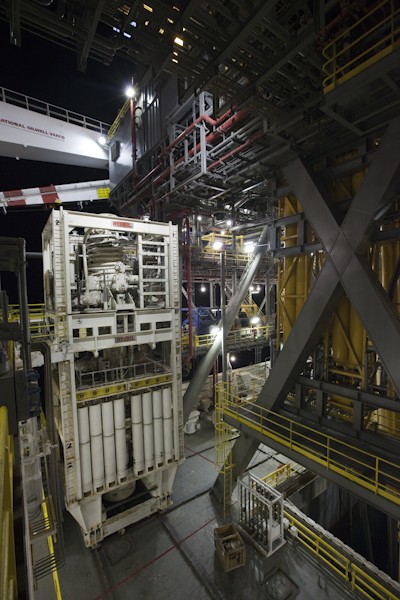Firms in Fed’s Beige Book Fret Over Any Lengthy Baltimore Port Closure
(Bloomberg) — The closure of one of the East Coast’s busiest ports after the collapse of Baltimore’s Francis Scott Key Bridge has so far not led to broad price increases,...


Blow Out Preventer on board the Discoverer Clear Leader (c) Rob Almeida
Imagine being an electrician troubleshooting a network error on the blowout preventer (BOP) control panel of an ultra-deepwater drilling rig when all of a sudden, the rig sends an emergency disconnect signal which engages the blind and casing shear rams and disconnects the LMRP from the stack.
For one deepwater rig operator, this scenario describes an enormously expensive “oops” they experienced in 2012.
According to Remi Eriksen, Group EVP and COO of DNV-GL, situations like this are becoming more and more prevalent as rigs and offshore vessels become more dependent on software and complicated electrical interfaces in order to operate. “More and more of the safety and reliability is in the hands of software,” commented Eriksen at the Offshore Technology Conference in Houston yesterday.
Given the growing need for testing and verification of these systems, DNV-GL announced yesterday they have acquired Marine Cybernetics, a company which since 2002, has specialized in third-party testing of computer control systems and pioneered the concept of Hardware-in-the-Loop (HIL) testing.
The systems developed by Marine Cybernetics allow vessels to conduct a virtual sea trial and test the inputs of new or upgraded systems which for newbuilds, has resulted in reduced commissioning times while at the same time increased the number and scope of the tests, commented Eriksen.
For a Subsea Superintendent on board a rig, Marine Cybernetics’ testing system would verify the functionality and failure-handling capability of the BOP control system software before it is taken into use onboard while at the same time detecting hidden software errors, erroneous configuration parameters, and design flaws.
Subsea is only one example however, “pretty much any sort of computer-based control system can be tested,” commented Marine Cybernetics Chief Executive Officer Stein Eggan. Typical systems in the marine and offshore sector include:
“There’s a weak spot in the way the offshore and marine industries work to ensure total system quality,” adds Eriksen. “That weak spot is getting bigger every day, but we’re going to rectify this. This will be a game changing platform to enhance safety and increase operational efficiency in the offshore and maritime industries.”


Marine Cybernetics was founded in 2002 as a spin-off from the Norwegian University of Science and Technology and shortly after received an investment from Statoil Technology Invest after the energy major recognized the importance of being able to independently test critical control system software on vessels and rigs. Statoil’s equity position in the company was 39 percent and the company was sold for an undisclosed amount.
Join the gCaptain Club for curated content, insider opinions, and vibrant community discussions.


Join the 105,952 members that receive our newsletter.
Have a news tip? Let us know.
Access exclusive insights, engage in vibrant discussions, and gain perspectives from our CEO.
Sign Up




Maritime and offshore news trusted by our 105,952 members delivered daily straight to your inbox.



Essential news coupled with the finest maritime content sourced from across the globe.
Sign Up